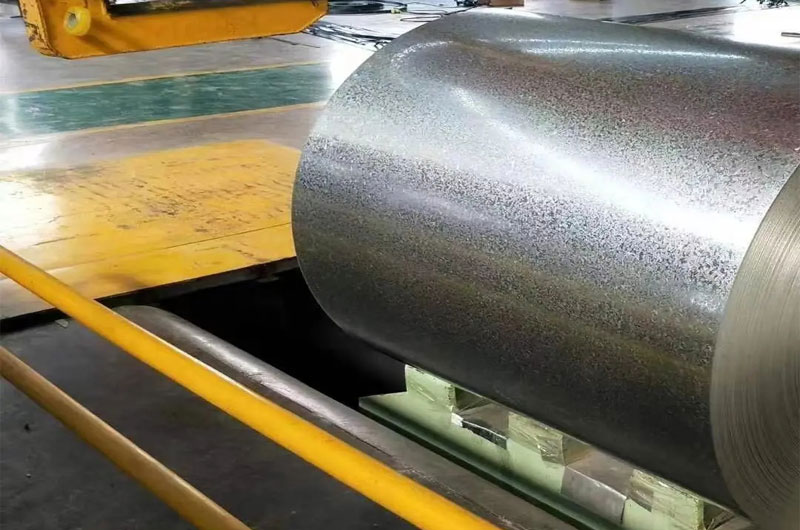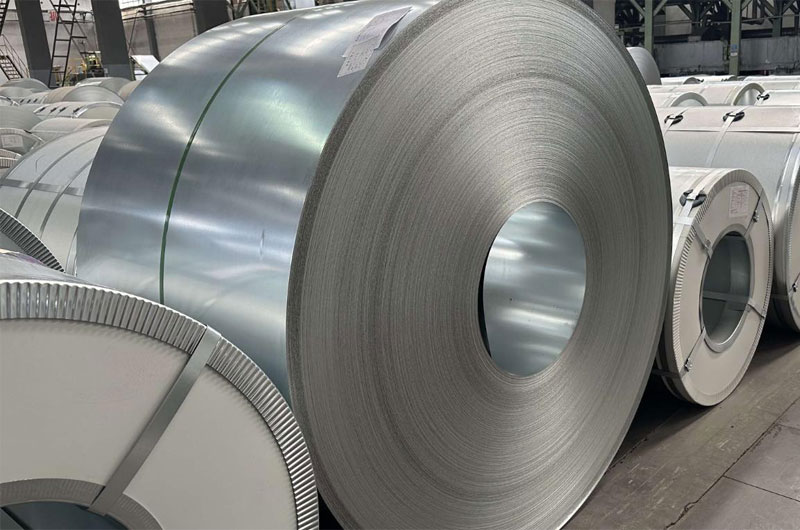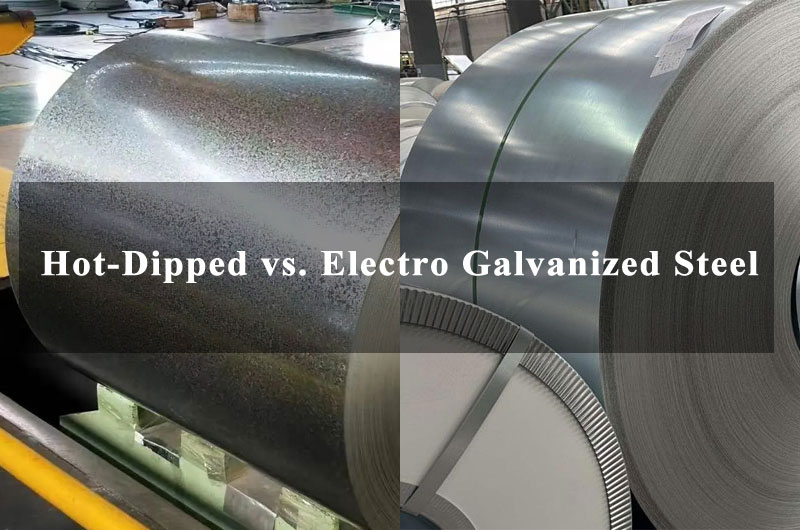Galvanized steel often refers to any zinc-coated steel, there are multiple galvanizing methods, most notably hot-dip galvanizing and electro-galvanizing.
Understanding how these methods differ in coating characteristics, performance, appearance, and cost will help you choose the right material for your project.
1. What Is Galvanized Steel?
“Galvanized steel” is steel that’s been coated with zinc to create a barrier against corrosion. Zinc protects the underlying steel through:
- Barrier Protection: The zinc layer physically separates moisture and oxygen from the steel substrate.
- Cathodic Protection: If the coating is scratched, zinc corrodes preferentially, sacrificially protecting the steel.
There are two primary galvanizing methods:
- Hot-Dip Galvanizing (HDG)
- Electro-Galvanizing (EG)
(Sometimes referred to as “pre-galvanized” when performed on coils or sheets before fabrication.)
2. Hot-Dip Galvanizing (HDG)

Process
- Surface Preparation: Steel is cleaned in a series of alkaline washes, acid dips, and rinses to remove mill scale, rust, and grease.
- Fluxing: A thin layer of zinc ammonium chloride flux is applied to prevent oxidation before dipping.
- Zinc Bath: The steel is immersed in a molten zinc bath (around 450 °C / 840 °F).
- Cooling & Inspection: After withdrawal, excess zinc drips off, and the coated steel is allowed to cool and solidify.
Key Characteristics
- Coating Thickness: Typically 50–150 µm (micrometers); may be even thicker on edges and corners.
- Durability: Excellent corrosion resistance; can last 20–50 years in rural/urban atmospheres.
- Appearance: Matte gray finish; surface may show characteristic spangle (crystalline pattern).
- Adhesion: Very strong metallurgical bond; less prone to flaking under mechanical stress.
Advantages
- Superior Corrosion Protection: Thicker coating withstands scratches and abrasion better.
- Long Service Life: Ideal for outdoor structures (bridges, poles, guardrails, structural steel).
- Self-Healing: Zinc “patina” forms over time, further protecting small scratches.
Limitations
- Dimensional Changes: Thick coating may affect tight-tolerance parts or assemblies.
- Appearance Variability: Spangle and slight roughness may not suit applications needing a smooth finish.
- Cost: Higher upfront cost due to energy-intensive bath and cleaning steps.
3. Electro-Galvanizing (EG)

Process
- Surface Preparation: Similar cleaning steps as HDG but optimized for electroplating.
- Electroplating: Steel sheet or coil is submerged in a zinc salt solution. An electric current plates a thin zinc layer onto the steel.
- Post-Treatment: Often followed by chromate passivation (clear or colored) for enhanced corrosion resistance and improved paint adhesion.
Key Characteristics
- Coating Thickness: Usually 5–25 µm.
- Durability: Moderate corrosion resistance; suited for indoor or mildly corrosive outdoor environments.
- Appearance: Smooth, bright finish; uniform and often chrome-passivated to provide a pleasing aesthetic.
- Adhesion: Good adhesion, but thinner layer means less sacrificial protection compared to HDG.
Advantages
- High Dimensional Accuracy: Minimal build-up, making it ideal for precision parts.
- Smooth Surface: Excellent base for painting or powder-coating; widely used in automotive body panels, appliances.
- Lower Cost: Less zinc consumption and lower energy usage translate to reduced costs for thin coatings.
Limitations
- Lower Corrosion Resistance: Thinner coatings wear through faster (5–10 years in outdoor atmospheres).
- Limited Self-Healing: Scratches expose steel more quickly; no patina build-up.
- Environmental Concerns: Chromate passivation may involve hazardous chemicals if not managed properly.
4. Side-by-Side Comparison
| Property | Hot-Dip Galvanized (HDG) | Electro-Galvanized (EG) |
|---|---|---|
| Coating Thickness | 50–150 µm | 5–25 µm |
| Corrosion Resistance | Excellent (20–50 yr lifespan) | Moderate (5–15 yr lifespan) |
| Surface Finish | Matte gray with spangle | Smooth, bright, uniform |
| Dimensional Impact | Noticeable increase (may need allowances) | Negligible |
| Paintability | Good (requires pre-treatment) | Excellent (chrome-passivated) |
| Cost | Higher | Lower |
| Common Uses | Structural steel, outdoor fixtures, marine components | Automotive panels, electronic enclosures, indoor fixtures |
5. Choosing the Right Coating for Your Project
Consider the following factors when deciding between hot-dip and electro-galvanized steel:
- Environment & Exposure
- Harsh/Outdoor: HDG for superior longevity and self-healing.
- Mild/Indoor: EG offers adequate protection with a better finish.
- Tolerance & Finish Requirements
- Precision Parts: EG ensures tight tolerances and a smooth surface.
- Aesthetic Flexibility: EG is often pre-treated for painting; HDG may require grinding or specialized paints.
- Budget Constraints
- Low Initial Cost: EG is more economical for high-volume, light-duty parts.
- Total Lifecycle Cost: HDG can reduce maintenance and replacement costs.
- Fabrication & Assembly
- Welding: Both can be welded, but HDG requires local touch-up of zinc coating.
- Fabrication Steps: EG-coated coils are ideal for stamping and forming before final assembly.

